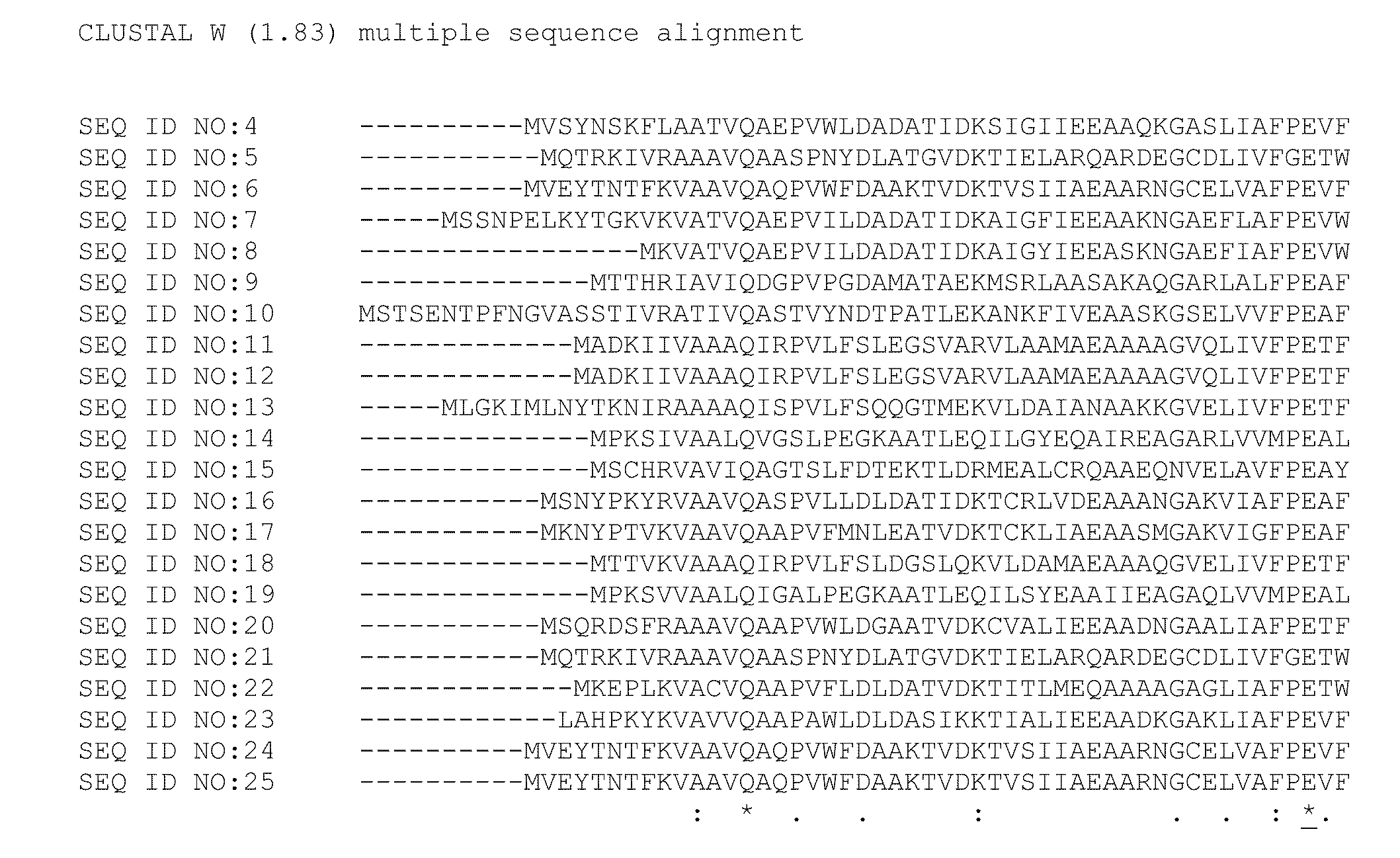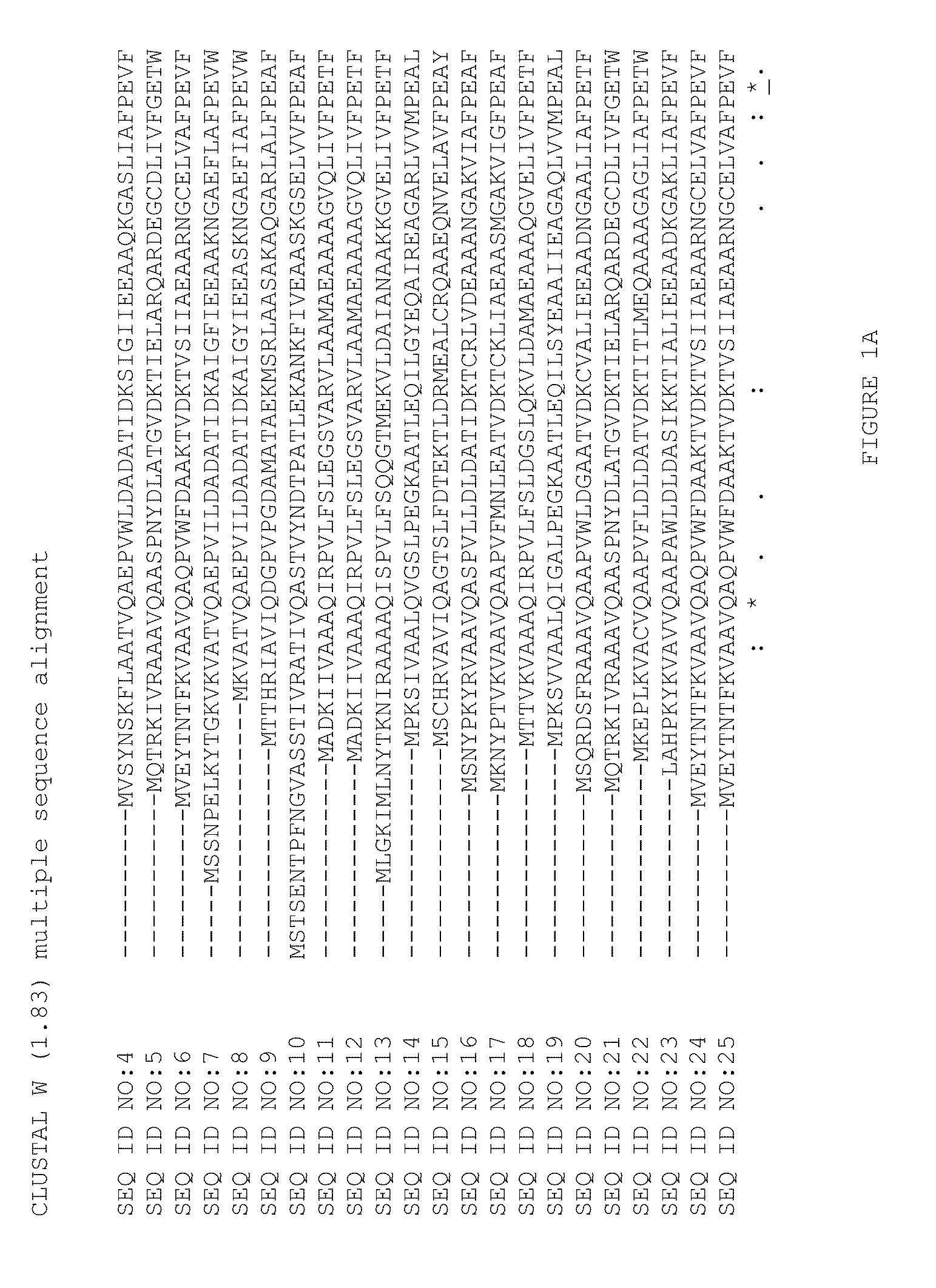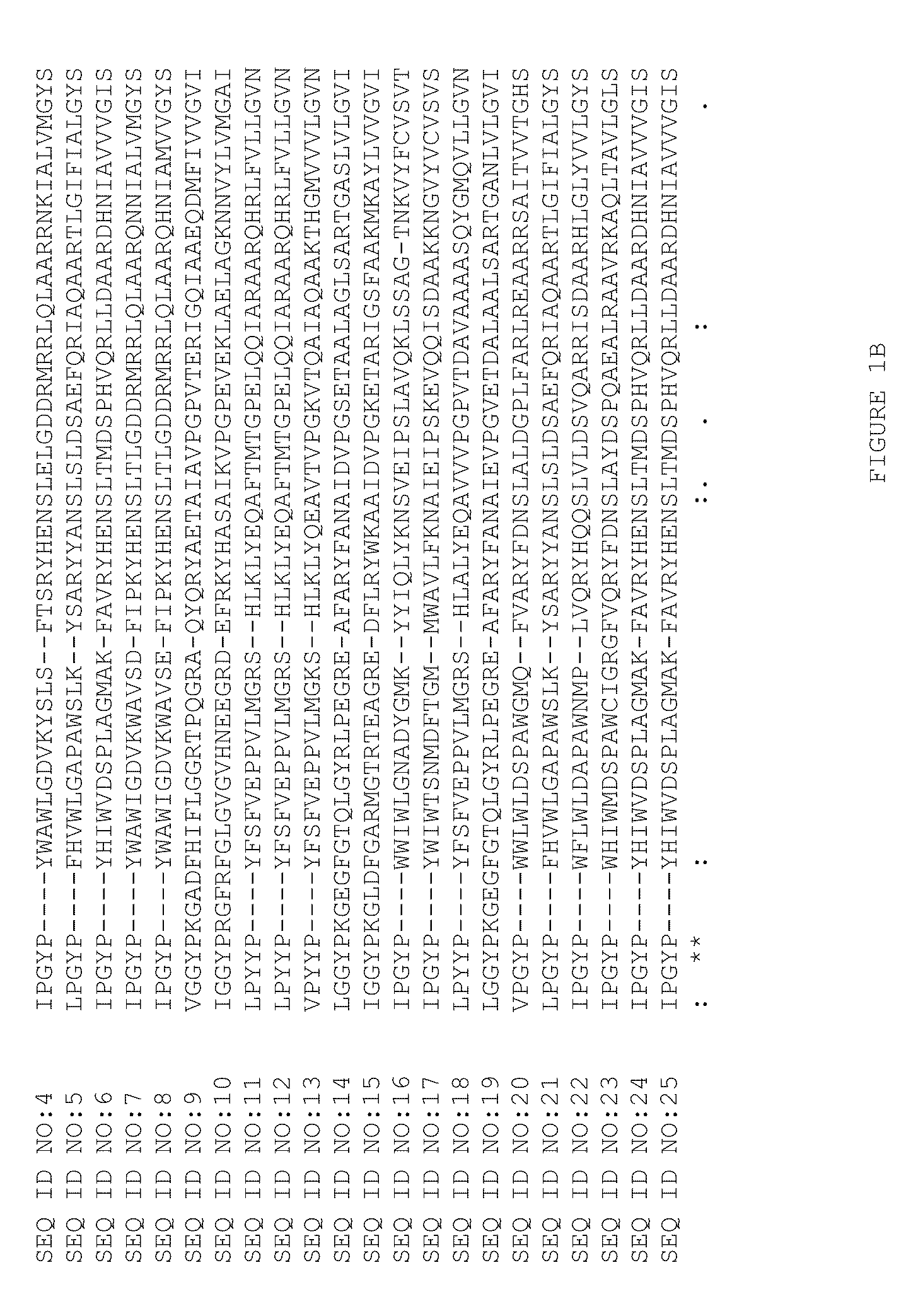Immobilized microbial nitrilase for production of glycolic acid
a technology of microbial nitrilase and glycolic acid, which is applied in the field of immobilized microbial nitrilase for the production of glycolic acid, can solve the problems of reducing the specific activity of the enzyme catalyst in batch reactions, affecting so as to improve the efficiency of the reaction, the effect of improving the specific activity during the conversion and improving the overall catalyst activity
- Summary
- Abstract
- Description
- Claims
- Application Information
AI Technical Summary
Benefits of technology
Problems solved by technology
Method used
Image
Examples
example 1
Fermentation of E. coli MG1655 / ISW138-168V
[0177]Seed cultures of E. coli MG1655 / pSW138-168V were grown in 500 mL LB media supplemented with 0.1 mg ampicillin per mL for 6-10 h (OD550=1-2) at 30° C. with shaking (300 rpm) prior to inoculation of the fermentor. Growth of E. coli MG1655 / pSW138-168V nitrilase strain was in 14-L Braun Biostat C fermenters (B. Braun Biotech International Gmbh, Melsungen, Germany) using mineral medium with glucose, ammonia, and salts, and lactose was used for induction. Pre-sterilization fermenter media (7.5 L) is described in Table 2. Post-sterilization additions include filter-sterilized trace elements (Table 3), 0.1 mg ampicillin per mL, 2 g casamino acids (Difco) per L, 4 g glucose per L, and 500 mL seed culture.
[0178]Fermentation set points are described in Table 4. NH4OH (40% w / v) and H3PO4 (20% w / v) were used for pH control. The dissolved oxygen concentration was controlled at 25% of air saturation with the agitation set to rise first with increase ...
example 2
Immobilization of E. Coli MG1655 / INM18-168V in GA / PEI-Cross-Linked Carrageenan Beads
[0179]With rapid stirring, 12 g of carrageenan (FMC GP911) was slowly added to 228 g deionized distilled water at 50° C., the resulting mixture heated to 80° C. until the carrageenan was completely dissolved, and the resulting solution cooled with stirring to 52° C. In a separate beaker equipped with stir bar, 83.2 g of frozen E. coli MG1655 / pNM18-168V cells (25.2% dcw) were added to 84.8 g of 0.35 M Na2HPO4 (pH 7.3) at ca. 25° C. and mixed until the cells were suspended, then a deoxyribonuclease I solution (10 μL of 12,500 U / mL DNase (Sigma) / 100 mL of cell suspension) was added. The cell suspension was filtered consecutively through a 230 micron and 140 micron Nupro TF strainer element filter, and heated with stirring to 50° C. With stirring, 160.0 g of E. coli MG1655 / pNM18-168V cell suspension at 50° C. was added to the carrageenan solution at 52° C., and the resulting cell / carrageenan suspension w...
example 3
Pretreatment of E. Coli MG1655 / ISW138-168V with Glutaraldehyde Prior to Immobilization
[0181]A 200-L fermentation was performed to produce a broth containing E. coli MG1655 / pSW138-168V cells that were subsequently pretreated with glutaraldehyde in-situ prior to immobilization. A pre-seed culture was first prepared by charging a 2-L shake flask with 0.5 L seed medium containing yeast extract (Ambrex 695, 5.0 g / L), K2HPO4 (10.0 g / L), KH2PO4 (7.0 g / L), sodium citrate dihydrate (1.0 g / L), (NH4)2SO4 (4.0 g / L), MgSO4 heptahydrate (1.0 g / L) and ferric ammonium citrate (0.10 g / L). The pH of the medium was adjusted to 6.8 and the medium was sterilized in the flask. Post sterilization additions included glucose (10 mL, 50 wt %) and 1 mL ampicillin (25 mg / mL). The pre-seed medium was inoculated with a 1-mL frozen stock culture of E. coli MG1655 / pSW138-168V in 20% glycerol, and cultivated at 35° C. and 300 rpm. The seed culture was transferred at ca. 2 OD550 to a 14L seed fermentor (Braun) with ...
PUM
| Property | Measurement | Unit |
|---|---|---|
| weight | aaaaa | aaaaa |
| temperature | aaaaa | aaaaa |
| pH | aaaaa | aaaaa |
Abstract
Description
Claims
Application Information
 Login to View More
Login to View More - R&D
- Intellectual Property
- Life Sciences
- Materials
- Tech Scout
- Unparalleled Data Quality
- Higher Quality Content
- 60% Fewer Hallucinations
Browse by: Latest US Patents, China's latest patents, Technical Efficacy Thesaurus, Application Domain, Technology Topic, Popular Technical Reports.
© 2025 PatSnap. All rights reserved.Legal|Privacy policy|Modern Slavery Act Transparency Statement|Sitemap|About US| Contact US: help@patsnap.com



